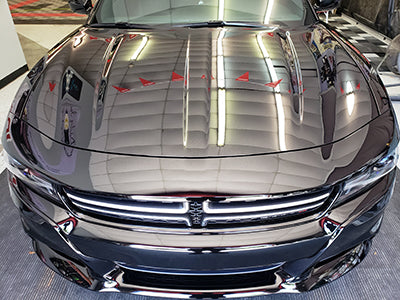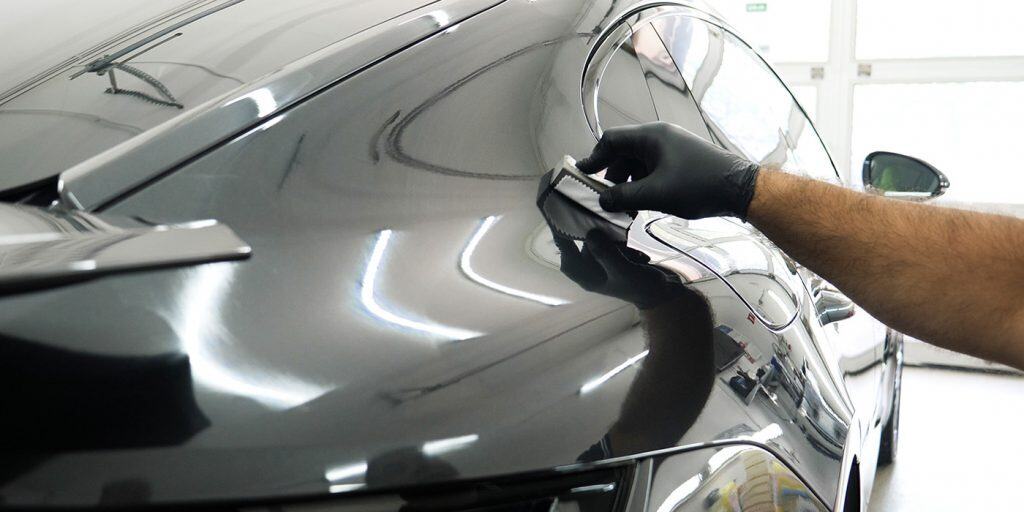Is Ceramic Coating Worth the Investment for Your Car’s Exterior?
Is Ceramic Coating Worth the Investment for Your Car’s Exterior?
Blog Article
Ceramic Finish vs. Standard Wax: Which Offers Much Better Long-Term Defense?
The dispute between ceramic coatings and traditional wax for automobile protection has gathered significant focus amongst automotive fanatics and professionals alike. While both satisfy of safeguarding paint, their distinctions in sturdiness, application, and long-term upkeep prices may affect a customer's selection. Ceramic finishes flaunt premium durability and resistance to ecological elements, yet the intricacy of their application increases inquiries concerning accessibility and practicality. As we explore these contrasting alternatives, it comes to be vital to take into consideration not just the prompt advantages but also the implications for vehicle care gradually.
Introduction of Ceramic Coating
Ceramic covering has actually gotten considerable appeal amongst automotive lovers and detailers alike due to its advanced protective qualities. This innovative innovation is developed to develop a resilient, hydrophobic guard over a lorry's paint surface area, dramatically enhancing its resistance to ecological contaminants such as dirt, UV rays, and chemical spots. Unlike standard wax, which supplies a momentary layer of defense, ceramic coatings bond at a molecular degree with the paint, using long-lasting longevity-- frequently expanding beyond 2 years with correct upkeep.
The application procedure involves meticulous prep work of the car's surface area, including cleaning and polishing to guarantee optimal adhesion. Once applied, the finishing treatments to create a robust layer that not only includes depth and gloss to the paint however also streamlines upkeep. With its hydrophobic buildings, ceramic finishing enables water and dirt to glide off more quickly, reducing the frequency of washes and decreasing the risk of swirl marks.
In addition, ceramic layers are offered in various formulas, permitting customers to select items customized to their certain requirements and preferences. On the whole, ceramic coating represents a substantial development in paint defense technology, delivering remarkable performance compared to standard alternatives.
Review of Standard Wax
Commonly considered as a staple in automobile care, wax functions as a preferred choice for those seeking a simple approach to improve and safeguard their car's paint - ceramic coating. Automotive wax generally makes up all-natural active ingredients, such as carnauba, or artificial compounds, created to develop a protective layer externally of the paint. This layer not only improves the vehicle's gloss and beam but additionally provides a barrier against environmental contaminants
The application of wax is usually straightforward, making it accessible for both specialists and DIY enthusiasts. Once used, wax requires a curing duration, after which it hardens to develop a protective shell.
However, while wax is efficient for enhancing the aesthetic allure of a car, it is very important to keep in mind that the defense it offers might necessitate more frequent reapplication contrasted to alternate products, such as ceramic coverings. Generally, conventional wax remains a popular choice for those focusing on convenience of usage and immediate aesthetic improvement.
Resilience and Long Life Comparison
While both ceramic coatings and conventional wax deal protective benefits for vehicle paint, their resilience and durability vary considerably. Typical wax, usually made from natural carnauba or artificial polymers, typically supplies a protective layer that lasts approximately 3 to 6 months. This reasonably short life expectancy requires routine reapplication to preserve optimum defense.
In comparison, ceramic finishings are engineered from advanced nanotechnology, forming a covalent bond with the paint surface area. This leads to a durable, hydrophobic layer that can withstand for 2 to five years, depending on the item and environmental conditions. The remarkable longevity of ceramic coatings is associated to their chemical framework, which offers boosted resistance to scratches, UV rays, and oxidation.

Protection Versus Environmental Factors
Safeguarding a lorry's paint from ecological aspects is critical for maintaining its appearance and worth gradually. Automobiles are continuously exposed to a selection of components, consisting of UV rays, bird droppings, tree sap, acid rain, and roadway gunk, all of which can jeopardize the integrity of the paintwork.
Ceramic finishes give a durable protection versus these ecological aggressors. Unlike conventional wax, which can degrade rapidly under UV direct exposure, ceramic finishes form a sturdy, hydrophobic layer that withstands the damaging effects of sunshine and toxic wastes. This innovative innovation produces a chemical bond with the lorry's surface area, supplying premium defense that lasts for several years, also in harsh conditions.
Conventional wax, while less complicated to use, commonly calls for frequent reapplication and offers restricted resistance to impurities and UV rays. In time, it can break down, leaving the paint vulnerable to scrapes and oxidation. On the other hand, ceramic layers maintain their protective top qualities longer, significantly decreasing the threat of paint damages and making sure that the automobile preserves its aesthetic appeal. Therefore, my website ceramic finishings are increasingly recognized as the exceptional choice for lasting defense against environmental factors.
Application and Upkeep Differences
The methods of application and subsequent maintenance for ceramic coverings and conventional wax vary dramatically, affecting the total user experience and efficiency of each product. Ceramic finishings need an even more complex application procedure, usually including surface area prep work that consists of washing, sanitizing, and brightening the lorry. As soon as the surface area is all set, the ceramic covering is applied in a regulated setting, usually needing specialist competence to make certain correct curing and bonding to the paint.

While both products improve lorry appearance, the longer-lasting security used by find this ceramic layers may warrant their initial investment, regardless of the more requiring application procedure. On the other hand, typical wax remains a preferred choice for those looking for a simpler, albeit short-term, option.

Conclusion
In verdict, ceramic finishings demonstrate substantial benefits over standard wax in regards to longevity and ecological security. With a life-span extending two to five years and exceptional resistance to UV rays, dirt, and chemical discolorations, ceramic coverings use an extra efficient remedy for long-lasting car upkeep. The application process may require expert know-how, the resulting price financial savings and minimized regularity of reapplication emphasize the worth of ceramic layers for those looking for optimal automobile defense.
The debate in between ceramic finishes and typical wax for vehicle protection has actually garnered significant attention among automobile enthusiasts and experts alike. Unlike typical wax, which gives a momentary layer of defense, ceramic coatings bond at a molecular level with the paint, using lasting sturdiness-- typically expanding past two years with appropriate upkeep.
While both ceramic finishes and conventional wax deal safety benefits for automotive paint, their sturdiness and durability differ considerably. For car fanatics seeking long-lasting security, ceramic finishings present a compelling advantage over typical wax pop over to these guys products.
In conclusion, ceramic coatings show significant advantages over typical wax in terms of sturdiness and environmental security.
Report this page